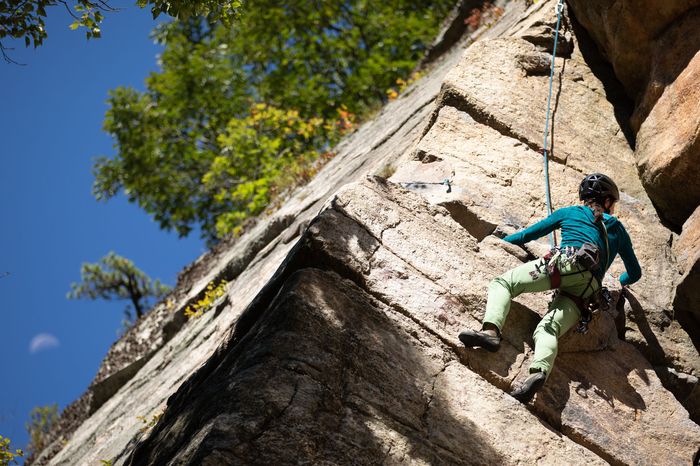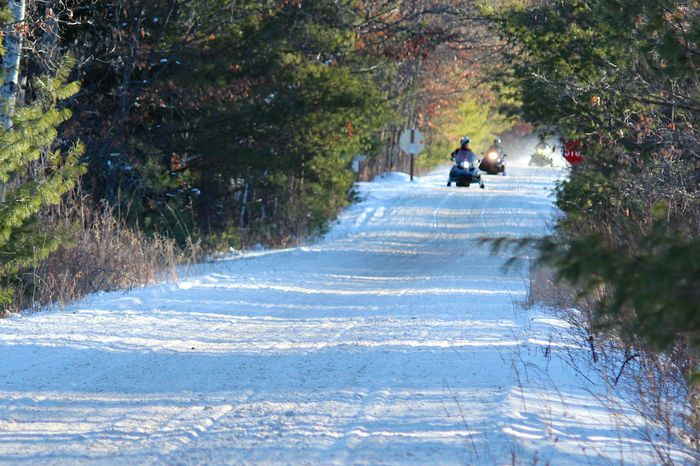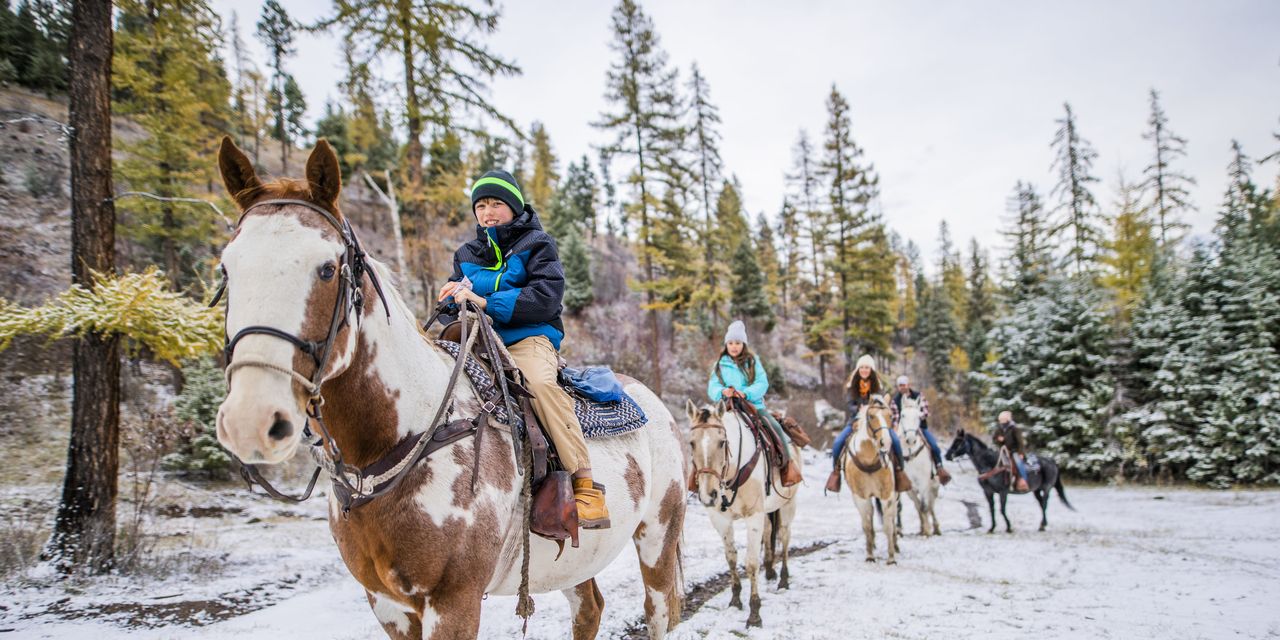Where does a late-40s outdoorsy family with quirky kids move to with a long-term goal of retiring there?
I’m an operating-room nurse. As a family we are always outside hiking, mountain biking, camping, climbing, paddle boarding, skiing, etc. I’m looking for a funky, eclectic town with a small hospital for employment.
We live in the San Francisco Bay Area. Funky and eclectic in our area used to be Berkeley, Santa Cruz and Fairfax. Most of those have been taken over by big tech. We like to be outside year round, and communities heavy on hiking, rock climbing and skiing tend to be funky towns.
Size-wise, we have lived in both big and small towns, and each has benefits. While we are on the West Coast, we are open to pretty much anywhere I can get an operating-room job as a nurse.
We have equity in the home that we would sell and would like to own a place outright with a budget around $500,000-$600,000.
Thanks,
Scott
Dear Scott,
I can think of many outdoor places, though what’s funky is in the eye of the beholder. And as you note, they can lose that spirit. Some might say that has happened to Asheville, N.C., for example.
Unfortunately, even Bay Area housing values don’t mean you can easily buy in great outdoors towns. There just isn’t that much supply in many of the obvious places, and demand is high. So are prices. It’s going to be tough to find a home unless you are OK with a larger city or are open to less-obvious places. (Don’t worry, I’ve got some for you!)
You’re likely already priced out of outdoor havens like Durango, Colo., and Hood River, Ore.
Boulder, Colo., also is too pricey, and the new communities springing up nearby … well, don’t look for eclectic there.
If you do have your heart set on some of these places, think hard about how much space your family needs. A three-bedroom home may squeeze into your budget while a four-bedroom place does not, for example.
And where on the priority list of outdoor activities is skiing? The frustrating search for affordable ski towns has been addressed a few times. If, for example, Salt Lake City or Ogden, Utah, meet your criteria, you could have amazing powder at well-known resorts within 90 minutes. Other city options with skiing nearby include Boise, Reno, Spokane and Grand Junction, Colo.
Unfortunately, home prices in many of these areas have soared during COVID.
Read: Behold, the most overvalued housing markets in America
Instead, if downhill skiing can be just a weeklong family vacation, you can consider warmer outdoor spots like Chattanooga, Tenn., and Bentonville, Ark. Since I hate to repeat myself, click on the links to read those articles.
Use the MarketWatch “Where Should I Retire?” tool to get county-level suggestions that meet your criteria. You can screen for hospitals, the weather, politics and many other factors that you haven’t mentioned but might be important to you.
I hope you’ll take the time to explore your list of finalists with short-term rentals that let you experience the community as a resident, not as a visitor. Do think about how much spectacular outdoors on your doorstep matters vs. the amenities of a larger town, whether what’s on supermarket shelves, ethnic cuisine, shopping options and concerts.
And be open to less-obvious suggestions. Here are three:
New Paltz, New York

Rock-climbing in the Monhonk Preserve outside New Paltz.
Grant Taylor, Courtesy of Ulster County Tourism
Smack in the middle of New York’s Hudson Valley, this community of about 14,000 people is 90 miles from New York City and about an hour to the three main ski resorts in the Catskills (bigger ski resorts are about 3 hours away).
You’ll find some of the most technically difficult rock climbing in the U.S. at the Trapps and Near Trapps in the Mohonk Preserve, which you can reach using the River to Ridge Trail that begins at the edge of town. There’s plenty of opportunities for climbing, hiking, biking and water sports amid the thousands of acres of preserved open space, 90 miles of carriage roads and trails plus mountain lakes in the Preserve and nearby Minnewaska State Park, all part of the Shawangunk Mountains.
You can also bike the mostly unpaved 24-mile Wallkill Valley Rail Trail, part of the bigger Empire State Trail, north to Kingston, and kayak in the Wallkill River.
More of that offbeat vibe comes from SUNY New Paltz and its 7,000 students. That keeps Main Street full of small, local shops. Indeed, New Paltz brags that it has no big box stores, nor are any just outside. (You can go to Poughkeepsie and Kingston for that.)
You’ll find farm-to-table restaurants, breweries, distilleries and fresh produce from area farms in New Paltz. The Culinary Institute of America’s restaurants, staffed by budding chefs, are a half-hour drive from New Paltz in Hyde Park, N.Y.
For those who want eclectic, plus more high-end dining, Woodstock, less than 30 miles north and closer to those ski options, may be the better choice. Yes, that Woodstock.
If that’s you, you may need to look harder to find a home in your budget.
Let’s talk work. From New Paltz, you have several possibilities: two hospitals are across the Hudson River in Poughkeepsie, reachable using the Empire State Trail when you don’t want to drive, and one is in Kingston.
As for travel, Poughkeepsie has train service to New York City. A handful of airlines fly from New York Stewart International Airport in Newburgh, less than 30 miles to the south.
New Paltz has the mildest climate of my three suggestions: January highs average in the mid-30s. Summer highs are in the mid-80s. You’ll also have four months where you are likely to have a foot of snow.
The median list price for a home was $449,000 in January 2022, according to Realtor.com, which like MarketWatch is owned by News Corp. Here’s what’s on the market right now.
Not a good fit? What about Rutland, Vermont, suggested here?
Kalispell, Montana

Downtown Kalispell.
Courtesy Discover Kalispell
This option, suggested by MarketWatch’s “Where Should I Retire?” tool, keeps you out West. Kalispell has close to 25,000 residents, almost a quarter of Flathead County’s population. The big attraction is Glacier National Park. But there’s more public land near Kalispell, including the 2.4-million acre Flathead National Forest.
You’ll find rock climbing at Kila Crags about 15 minutes west of Kalispell. Flathead Lake, 10 miles south of town, is the largest natural freshwater lake west of the Mississippi. Or head 15 miles north to Whitefish Lake and Whitefish Lake State Park.
For winter sports, head north to Ski Whitefish Mountain Resort or south to Blacktail Ski Area.
If an above-average number of breweries in the county is a positive lifestyle sign for you, then Kalispell checks that box. The median age of residents here is below the median for the entire U.S. – but note that its share of both those 18 and younger and 65 and older is above the national rate.
Unlike New Paltz, the box stores are in town: think Costco, Walmart, Target.
As for work, you’ll be looking at Logan Health Medical Center, formerly known as Kalispell Regional Medical Center. It made Chartis Group’s list of the top 100 rural and community hospitals in 2022. Logan Health – Whitefish (formerly North Valley Hospital) was named to its list of top 100 Critical Access Hospitals.
Montana might seem pretty isolated compared to the Bay Area. However, Glacier Park International Airport is served by major airlines as well as smaller ones. Amtrak stations are in nearby (and smaller) Whitefish as well as East Glacier, part of the Seattle-to-Chicago service.
Although Kalipsell is much further north than New Paltz, the climate here isn’t much cooler. January highs average just under 30. Average summer highs hit the low 80s. Perhaps surprisingly, only two months average more than a foot of snow.
COVID has driven up prices here, and rentals can be hard to find. The median list price for a home was $472,950 in January 2022, according to Realtor.com. However, it was $570,000 or more for the previous three months, so take it all with caution. Here’s what’s on the market now.
An alternative: the college town of Missoula, 120 miles south and suggested here.
Minocqua, Wisconsin

Snowmobilers on a trail near Minocqua.
Getty Images/iStockphoto
Here’s my wild card, a do-you-dare choice because winters in Wisconsin’s Northwoods are long, snowy and cold.
But if you’re ready to embrace winter, Minocqua and the neighboring towns of Woodruff and Arbor Vitae, with a combined population of more than 10,000, might be a place for you. And I mean embrace: you should expect six months with an average of at least a foot of snow each month and average January highs of just 20 degrees. (July highs average in the upper 70s.)
Still, can an outdoorsy family resist a powder-filled ski area that warns much of its terrain is “very advanced or expert only, even by Rocky Mountain standards” – no beginners allowed – and has opened a (relatively easier) new area called Voodoo Mountain?
Granted, Mount Bohemia is in Michigan’s Upper Peninsula, a few hours from Oneida County (38,000 people) and neighboring Vilas County (23,000 people). Powder spots closer to Minocqua are Big Powderhorn Mountain Resort and Big Snow Resort’s Blackjack and Indianhead mountains, also in the UP, and Whitecap Mountains in Wisconsin.
Switch it up with Minocqua Winter Park, a cross-country ski center with 54 miles of cross-country trails that wind through 6,500 acres of forest a dozen miles west of town. Or ride a fat bike, snowshoe and ice skate there.
There’s yet more outdoors to embrace in this area surrounded by lakes and forests. Public lands include the 236,000-acre Northern Highland – American Legion State Forest, which has more than 900 lakes and miles of trails and old logging roads for hiking and mountain biking. And of course, cross-country skiing.
Choose between two longer bike trails: the Bearskin State Trail – a 26.5-mile crushed stone route from Minocqua south through forests and past many lakes – and the Heart of Vilas County Bike Trail System, with more than 52 miles of paved trail to the north and east.
What you won’t find here is rock climbing. Is that essential? Or be prepared to drive three hours for some of the best rock climbing in the Midwest in Devils Lake State Park, outside Baraboo, suggested here.
Quirky? Start with dinner at the Little Bohemia Lodge about a half-hour north of Minocqua, where John Dillinger and his gang escaped from the FBI in a shootout in 1934. And dress up in your best cow-themed apparel for Minocqua’s Beef-A-Rama on the final Saturday in September, a street festival with nonstop music and where local businesses compete for who’s best at cooking 10-pound rump roasts.
Then there are Wisconsin supper clubs – leisurely, retro mostly dinner-only restaurants, no membership required. You’ll get a starter tray – each restaurant has its own take – then move on to your generously portioned meal (think fish fry on Fridays and prime rib on Saturdays) and end with an alcoholic ice cream drink like a Pink Squirrel.
For work, start with the two area hospitals: one in Minocqua and another in Woodruff, each part of larger networks.
The downside of this abundance of nature is its remoteness – more than three hours to Madison, almost four hours to Milwaukee and more than four hours to Minneapolis. Your box stores are pretty much limited to Walmart and Tractor Supply Co. (and a few more 30 miles away in Rhinelander, which also has a small airport).
Broadband access, while rapidly improving, is not at the level you’re used to in the Bay Area.
The area draws plenty of weekend homeowners. The median list price for a home was $349,450 in January 2022, according to Realtor.com. Here’s what’s on the market now.
Readers, where should Scott and his family move? Leave your suggestions in the comments section.
More from MarketWatch
We want to live in a small town where we can bike, hike and kayak — so where should we retire?
